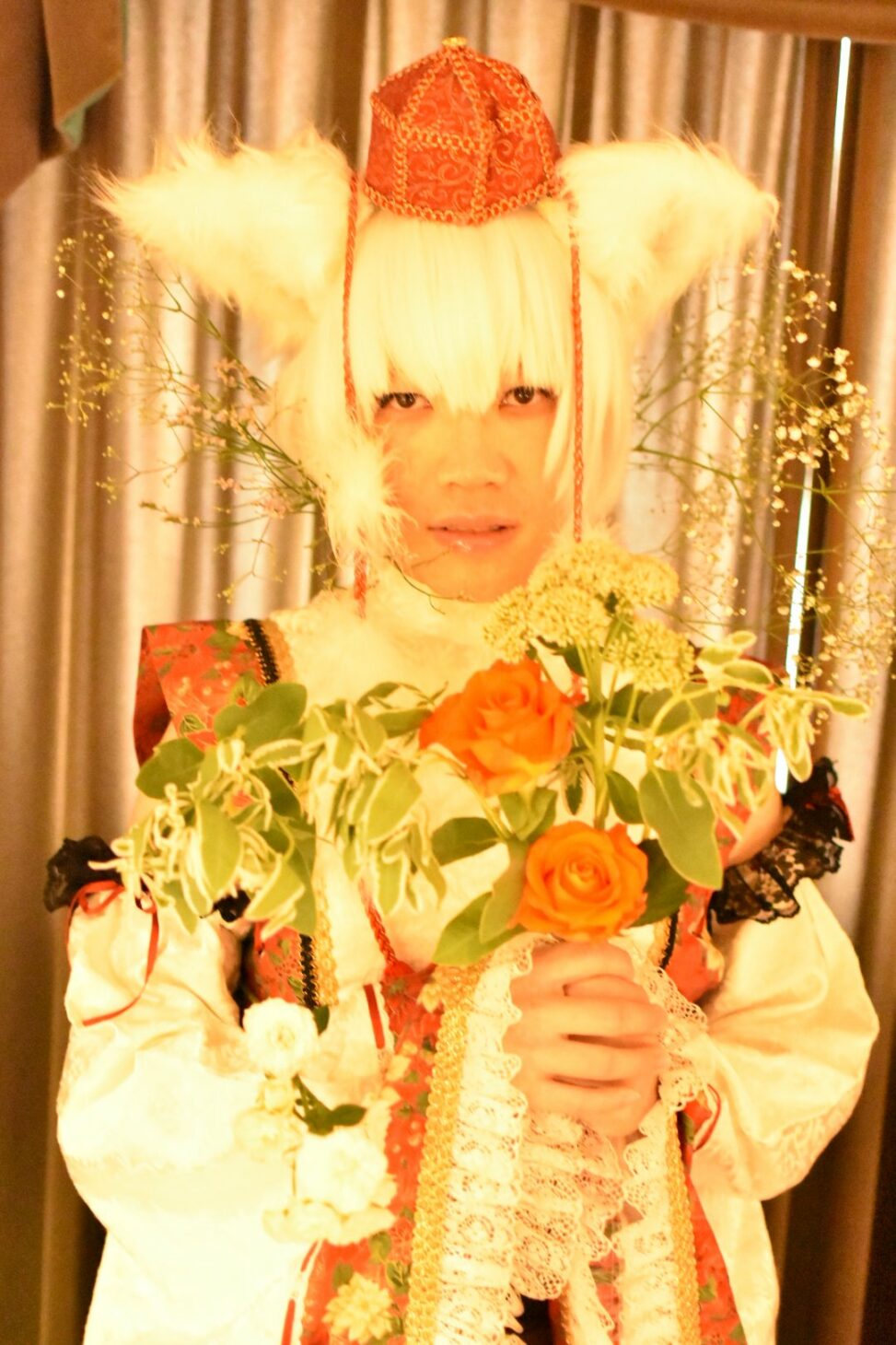Image Attribution: “VISA1500 – Assignment 2A Crossplay” by 59 is licensed under a different open license (@59rar). (See interactive map)
Keishi Miya
T00647788
This is a picture from one of my online friends, 59, who lives in Japan, and he wears the costume of a character called Momiji. Momiji is from one of the famous PC game series, the Toho project, and cosplays of the characters are not rare in Japan, and it seems like he bought this costume online and perhaps it is an order-made. He took this picture in his house, but he occasionally attends cosplay events once or twice per month and a lot of his cosplay posts on Twitter are when he attends small events.
The PC game, Toho project is well known as an old-school 2D shooting, but we can see this in both paper and digital media such as Manga or Anime these days. Most of the characters are Japanese Demons and appear as female. Because the number of characters of the Toho project is numerous, it was hard for me to identify the cosplay as Momiji, however, as a Japanese anime fan, I can easily guess it is one of the Toho characters by the clothing. The costume obviously made based on women’s clothing for Shinto, traditional Japanese religion, and dog-ear on his head; these are the appearance found in Toho Project’s characters. Despite the difficulty of men appear as females in cosplay due to the structure of the skeleton, we can easily find the costume of Momiji or other characters for males on Amazon. Perhaps, it is because most of the Toho Project characters wear less revealing clothing compared to other anime characters subject to cosplay.
All of his costumes are for cosplay female characters of amines or games; it means he is doing crossplay, one of the sub-genres of cosplay. According to Okabe (qtd. in Patrick), Japanese cosplayers tend to like to get and “feedback from peers rather than outsiders,” and he does cosplay as a communication tool with other crossplay cosplayers. In his tweet, he focuses to be cute by costume, especially with the fluffy accessories and discusses it with other cosplayers. In addition, Bulter (qtd. in Nikole) asserts that “rather than showing how cross-dressing can erase existing boundaries of gender identity, Butler emphasizes how it reconfirms heteronormativity.” In his cosplay, he cannot change his height or the skeleton, however, the purpose is not completely to imitate the character, but he still can express what he thinks is cute.
In this picture of cosplay, 59 shares his hobby to communicate with peers. Less revealing clothing character makes more choices for men to do crossplay, however, they are still cute and expand their ways to express what cosplayers want to be beyond their gender.
Bibliography
Galbraith, Patrick W. Cosplay, Lolita and Gender in Japan and Australia: An Introduction. 15 August 2013. 12 October 2021. <http://intersections.anu.edu.au/issue32/galbraith_intro.htm>.
Lamerichs, Nicolle. “Stranger than fiction: Fan identity in cosplay.” Transformative Works and Cultures 7 (2011). Journal. 11 October 2021. <https://journal.transformativeworks.org/index.php/twc/article/view/246/230>.
